|
Some Example UHF Satellite Downlink Spectrum Plots
Matt Blaze3 October 2012 (updated 14 October 2012) These pictures are part of http://www.mattblaze.org/misc/uhf-sats/; you might want to go there first if you've somehow landed directly here. Here are some example spectrum plots of various UHF satellite transponder downlinks. All were taken with a Rohde and Schwarz PR100 receiver, hooked up to a Trivec-Avant 2055 SATCOM antenna, aimed approximately toward the satellite being captured (scroll down for a photo of the setup)
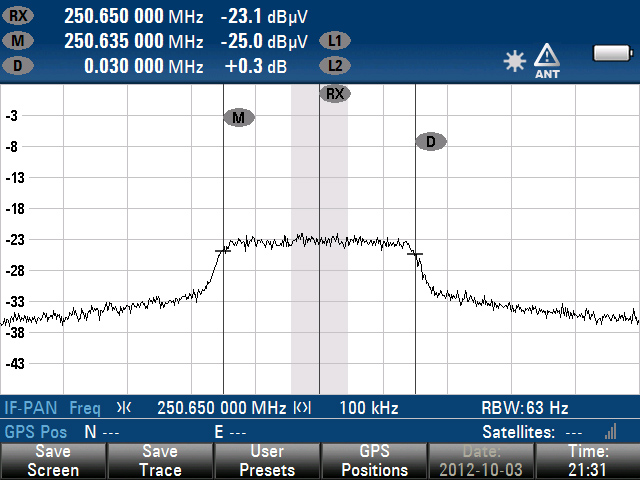
Figure 1. This is a typical idle UFO ("UHF Follow-On") voice transponder, 30 KHz wide (though the channel is officially 25 KHz). This one was from UF06, on 250.650 MHz. Note how the peak of the signal starts at 250.635, stays roughly flat until 255.665, and then drops off rapidly.
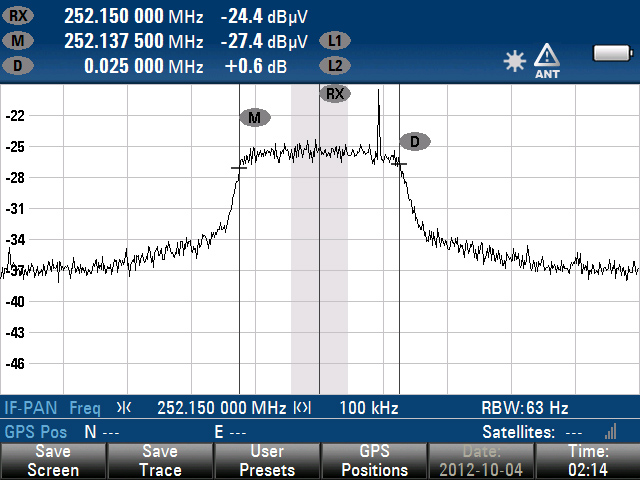
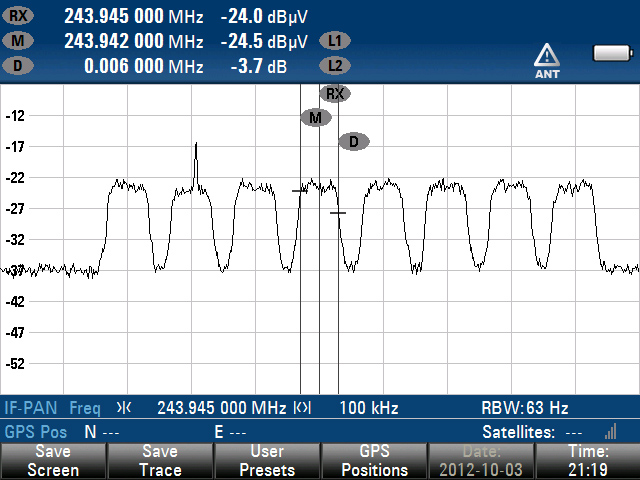
Figure 3. Here is a typical UFO narrowband data transponder, 6 KHz wide. Note the similar transponders above and below, for a total of eight on the screen, all from the same satellite. The second transponder has a data peak showing. These are from UFO5, centered on 243.945 MHz.
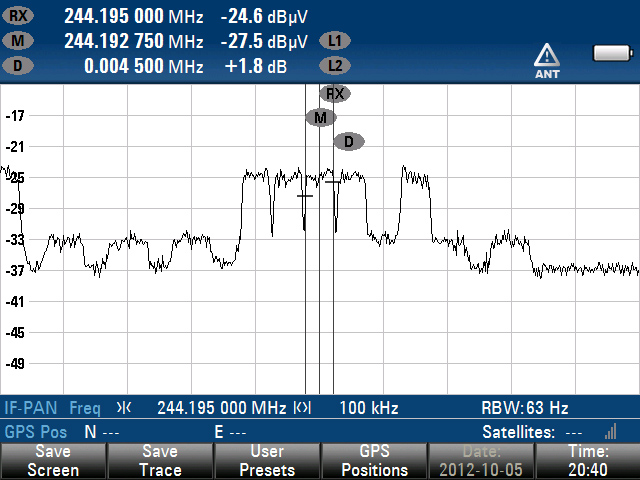
Figure 4. The FLTSATCOM8 data transponders, on the other hand, are only 4.5 KHz wide, and are spaced much closer together than those on UFO5, with only a 500 Hz guard band between them. This shows FLTSATCOM8 transponders at 244.185, 244.190, 244.195 (center), 244.200, and 244.210. This frequency range is shared with the CONUS UFO6 bird, whose (slightly wider) transponders can be seen near the noise floor (since the antenna was aimed at FLTSATCOM8).
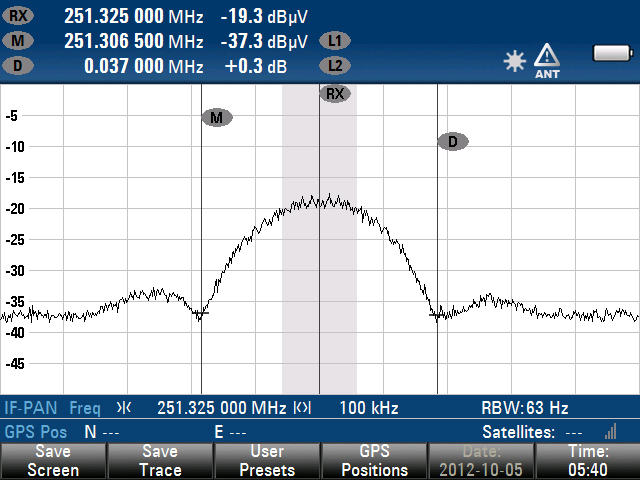
Figure 5. Not all satellite downlinks have the characteristic uniformly distributed "flat" shape. Some US SDS ("Satellite Data System") transponders have a more normally distributed signal, such as this one on 251.325, which I believe is from SDS3-F2.
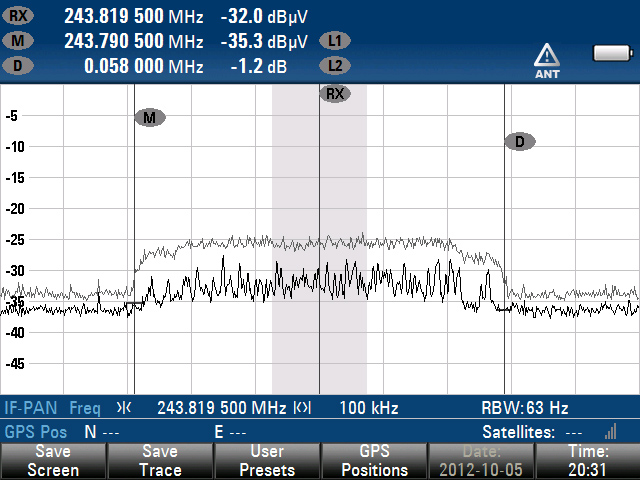
Figure 6. Here is a 58 KHz wide spread spectrum signal, probably from a Milstar satellite, centered at approximately 243.8195. The top trace shows the peak signal levels over several minutes and the bottom shows the instantaneous levels at a particular moment (over time, the spread spectrum peaks form a uniform distribution over the transponder's bandwidth). Demodulated with an SSB receiver, this signal sounds vaguely like water droplets falling.
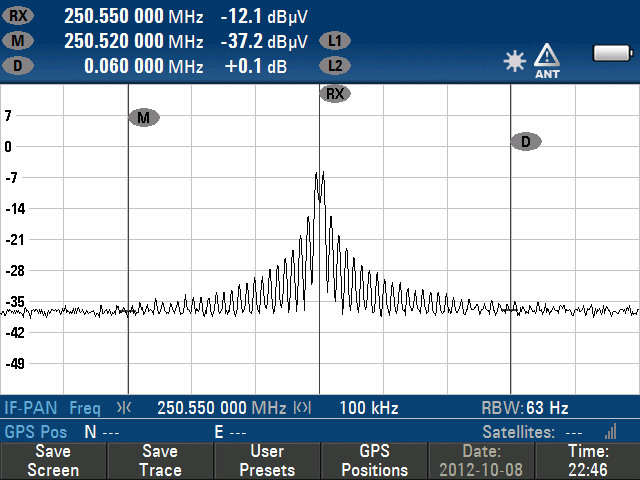
Figure 7. From time to time unusual waveforms pop up on the transponder frequencies. Usually 250.550 hosts a normal 25 KHz transponder. But occasionally this wide data signal -- with regularly space sidebands about every 1.2 KHz and covering at least 60 KHz -- appears. I've seen similar signals on 250.450 and 250.650. Perhaps notably, each of these is the first channel in their respective transponder bandplans. I believe these are Navy Fleet Broadcast transmissions.
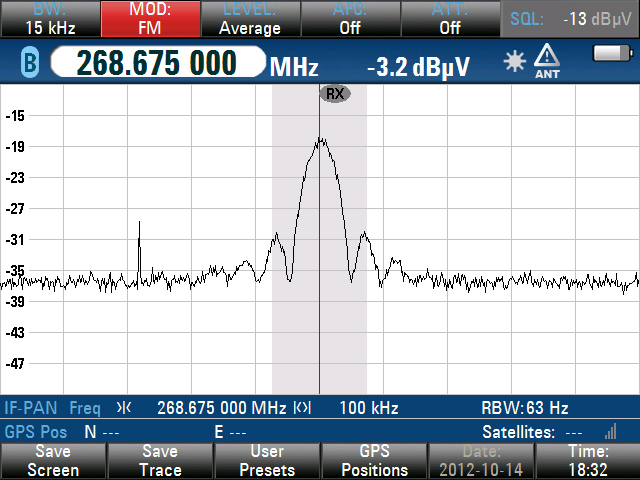
Figure 8. Another unusual waveform, on 268.675. I believe this is from SDS III-2, and is a UHF downlink of either a sensor or an SHF or EHF uplink. There are sidebands every 8 KHz to about 30 or 40KHz total width, with a very strong 9 or 10 KHz wide center peak.
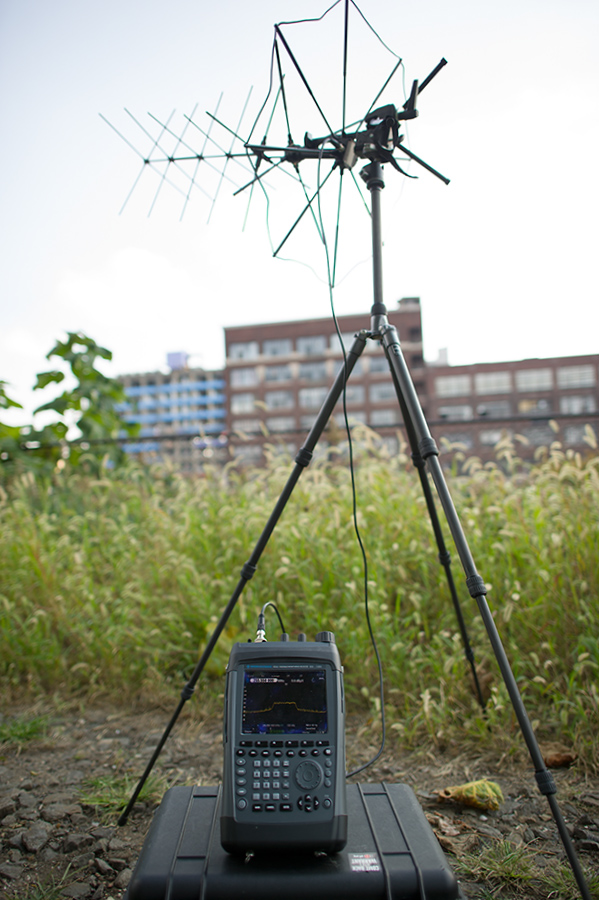
Figure 9. Here's my portable receiving and measurement setup: A Trivec 2055 TACSAT antenna (clamped to an ultralight camera tripod) and a Rohde and Schwarz PR100 portable measurement receiver. Although the whole thing breaks down to fit in the Pelican case on which the receiver is sitting, it only takes a few minutes to set up. Here we're watching an idle FLTSATCOM8 transponder (waiting for a Brazilian pirate to use it) on 255.550, a mere 40,000 kilometers or so over the horizon to the East-South-East from Philadelphia.
|